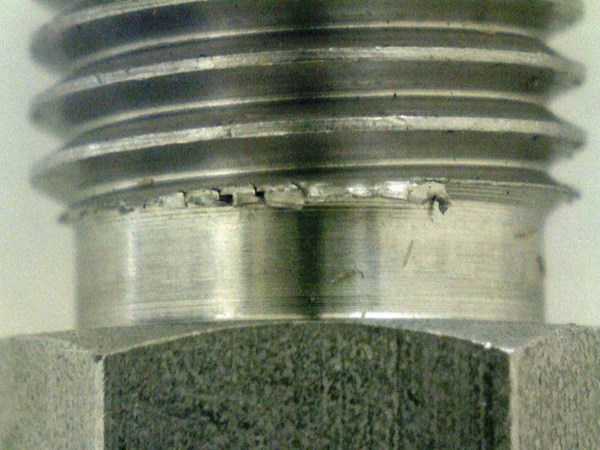Defining Deburring and FOD
Burrs and foreign object damage (FOD) are considerations that are increasingly critical as precision machined parts are engineered from more challenging materials and to demanding geometries and applications.

Looks like unwanted, raised material to me.
Burrs and foreign object damage (FOD) are considerations that are increasingly critical as precision machined parts are engineered from more challenging materials and to demanding geometries and applications.
Burrs are unwanted, raised material remaining on a machined part as a result of prior manufacturing operations.
FOD can be either foreign object debris or foreign object damage. As defined by the National Aerospace FOD Prevention Inc. (NAFPI), foreign object debris is a substance, debris or article alien to a vehicle or system, which would potentially cause damage. Foreign object damage is any damage attributed to a foreign object that can be expressed in physical or economic terms, which may or may not degrade the product’s required safety and/or performance characteristics. FOD causes serious issues to manufacturers and their customers making critical human safety reliant systems such as automotive, aerospace, fluid power or medical devices or systems.
So how do we deal with burrs and FOD? Based on my experience (a few more years than I care to admit), there are some things to consider with difficult to see FOD and burrs. Number one, hand deburring is typically out of the question—even with magnification. If hand deburring does happen to remove the burr, the dislodged burr magically transforms itself into yet another source of FOD. Mass finishing techniques (vibro, tumbling, Spinner, bead blast/waterjet) will fall into the same trap. They may be able to dislodge the burr or foreign object, but then that dislodged item creates damage to the surface finish or features you fought hard to create in the part.
Thermal deburring is a batch process involving intense heat in short durations. It’s like being inside an explosion. Because it utilizes combustible gases under pressure, it has been proven to be extremely effective at removing the hard to see burrs we often encounter on the less machinable materials and alloys we see in our shops today. One advantage of thermal deburring is that it does not create FOD, and the process will seek out other sources of FOD that may be lurking in some of the tightest geometries in the part. There is nothing quite like an explosive gaseous mixture to see and vaporize and remove all unwanted debris on or in our parts.
Electro-chemical deburring is usually referred to as ECD. It applies an electrical current to the areas where the burrs are located. The current carried by the electrolyte actually dissolves the burr material. This process can actually create a controlled radius on the workpiece by its action.
Electro-chemical deburring is therefore quite useful for removing burrs at internal intersections, especially when a radius is either desired or required. The downside of ECD is that it may not completely take care of other sources of FOD. This is easily resolved with the addition of a special wash process in conjunction with ECD to get to “yes” with your customer.
Due to the expense and engineering associated with these processes, and the intermittent need for them, these processes are seldom performed in house in contract manufacturer’s operations. They are readily available from a number of job shops across the continent. You will find that most shops will provide a no-charge feasibility analysis including sample processing, so there’s really no down side to investigating these options while you continue to search for possible in-house solutions.
Originally posted on PMPAspeakingofprecision.com blog.


